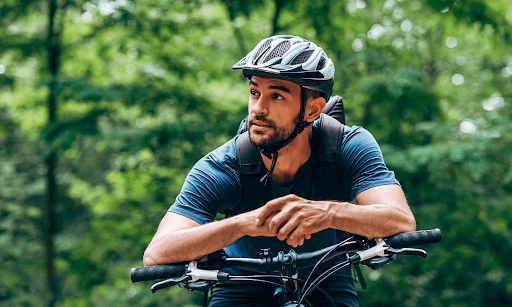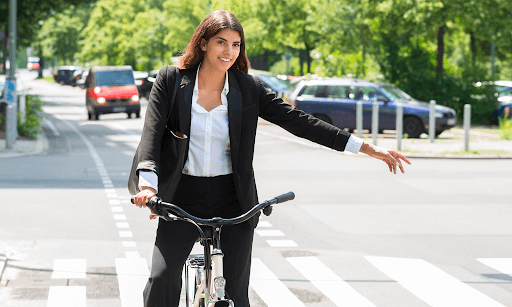That’s why it’s important to know the rules of the road when you are riding a bicycle and to be aware of possible risks so that you can make your ride as enjoyable as possible. Many bicycle accidents are avoidable if the riders are alert and vigilant.
The unfortunate reality is that motor vehicle accidents (including those that involve bicycles) are, according to the World Health Organization, a public health crisis. They are one of the leading causes of death around the world, with head injuries being the leading cause of death and disability.
According to the National Highway Traffic Safety Administration, there is much you can do to prevent bicycle accidents. In this blog post, we will explore some of the following:
- What to do before a ride
- What to do during a ride
- Being visible
- Risks
- What to do as a motorist
At the Nick Schnyder Law Firm, we know how crucial it is to employ good safety practices while enjoying the open road. Yet, in spite of caution, there is always the risk of an accident. If you’ve had a bicycle accident that was the result of a driver’s negligence, call us today to find out more about your options. In the meantime, take a look at the points we’ve laid out about bicycle safety.
What to Do Before a Ride
There are many things to do in preparation for a bike ride, whether you’re cycling through the mountains or on your way to do errands. This preparation time is key to ensuring that your ride is safe and enjoyable. But it might be hard to know where to start.
Wear a Helmet
This may seem obvious, but wearing a helmet will actively reduce the risk of serious head injury. Helmets very simply provide another layer of protection for not only the brain but for the skull and tissue surrounding it.

A helmet works in three ways:
- reducing brain movement and impact upon a collision
- distributing the force of impact upon the skull
- preventing direct contact with the brain and skull during a collision
Although wearing a helmet is legally required for anyone under 16 in Georgia, healthcare professionals recommend that all riders wear helmets regardless of age. According to the WHO, wearing a helmet decreases the risk and severity of injury by 72%.
Check Your Equipment
Before you ride, you should always check your equipment to make sure everything is working properly. The bicyclist should check the air pressure in the tires, check the brakes, and check the bicycle height. Furthermore, you should check the chains and screws as well to ensure that everything is in working order.
It is important that you adjust your bicycle height for optimal comfort and control. Make sure that the seat is level and that the height should allow for a slight bend at the knee when the leg is fully extended.
For mountain bikes, there should be 3 to 4 inches between the rider and the top bar on the bicycle. For road bicycles, there should be 1 to 2 inches. The handlebars on any bicycle should be level with the seat.
Plan Ahead
In most towns or cities, there are lanes and routes specifically for bicycle riding so that the riders can travel safely. Researching this may take some time before you start your ride, but it is worth it. Knowing where the designated bike lanes are will make your ride smoother, more enjoyable, and most importantly, safer.
If you are riding a bicycle in Atlanta, it is illegal to ride on the sidewalk for people 12 and older. Sidewalks in Atlanta can be uneven and crowded with pedestrians so bicycles should stay in lanes or on paths. You will also get a ticket in the city of Atlanta if you ride against traffic or if you ride at night without proper lights or reflectors on.
What to Do During a Ride
After taking proper preparations, you should stay vigilant during the ride so you can safely enjoy the activity.
Be Predictable
The best way to stay safe while riding your bicycle is to be predictable. That means communicating with other riders and motor vehicle drivers, controlling the bicycle, and obeying all traffic laws.
When riding, experts suggest that you should alert others to your changes in movement. This could include something as simple as ringing a bell on your handle bars. When changing lanes or turning, bicyclists should say:
- “on your left”
- “on your right”
- “behind you”

This communication is simple, but it’s a crucial part of staying safe on the road.
Keep Control of the Bicycle
You should always have full control of your bicycle when riding. You should always have both hands on the handlebars and engage in best riding practices; this means avoiding reckless behavior including wheelies and other tricks.
Finally, the best way for other riders (and drivers) to anticipate your movements is to obey all traffic laws. Bicycle riders should not ignore stop signs or traffic lights. They should also follow the flow of traffic and go with it instead of against it. Furthermore, riders should always stay off all electronic devices (including avoiding listening to music through headphones) and keep their eyes on the road.
Be Visible
This is the number one most important tip that a rider should know when it comes to riding a bicycle. This means using proper hand signals, following the flow of traffic and keeping in the designated bike lanes and paths.
Bike riders should ride in relatively straight lines and avoid swerving in their lanes. Staying visible also means staying away from parked cars (whose doors might open without notice), and yield to pedestrians and motorists when pulling out onto a larger road. Furthermore, bicyclists should always ride on the right side of the road.
Lastly, bicyclists should wear bright, reflective clothing while riding during the day and night. Wearing dark colors while bike riding might not make you as visible to motorists.
Avoid Riding at Night
While riding at night is not illegal in Georgia, bicyclists must take extra precaution when doing so. It’s best to complete your trips before nightfall so you can have the safest ride possible. If you ride at night, take extra precautions when doing so.
If a bicyclist rides at night in the state of Georgia, they must have a white light on the front of their bicycle and a red reflector on the back of it.
Risks
A major risk for bicyclists is not being seen. While motorists should always be aware of bicyclists and the vehicle’s blind spots, sometimes they do not exercise appropriate caution.
It is up to the bicyclist to be aware of any motor vehicles around them and to operate the bicycle responsibly. This is especially important when you make turns at intersections: always look behind you for motor vehicles before you make your turn.
Another major risk for bicyclists is road hazards. These road hazards could include potholes, items in the road or uneven pavement. Being a cautious bicyclist will help you avoid these issues and prevent you from sustaining injuries.
What to Do as a Motorist
While bicyclists have a large responsibility to ride safely, motorists are also responsible for being aware of bike riders. The Atlanta Metro Area is very popular for all kinds of cyclists, given the PATH and the Beltline. Due to the popularity, there is a greater chance of incidents between motorists and cyclists.
Motorists should always use their side and rearview mirrors to check for cyclists before turning or changing lanes. Being vigilant as a motorist will prevent any accidents or injuries.
Furthermore, motorists should always take extra caution at night for bicyclists.
To Conclude
Exercising caution when riding a bicycle is important for your safety and the safety of others. By checking the bike before the trip, wearing safety apparel, staying visible, communicating with others, and practicing safe riding/driving choices, you can prevent injury to yourself and others.
When we’re out on the road, whether it’s on a bicycle or in a motor vehicle, everyone has a role to play. Being aware of bicycle safety is the first step to avoiding serious injury.
But if a serious injury does occur, you know that we’re in your corner, ready to fight for you. If you’ve been injured in a bicycle accident, contact us today to set up a free consultation of your case.
